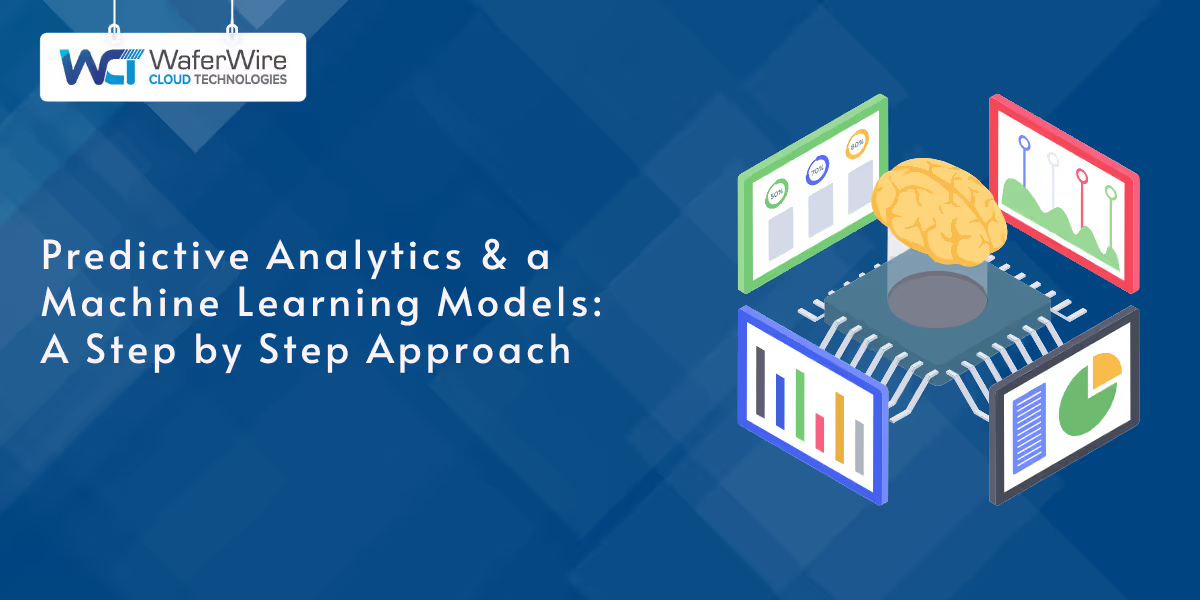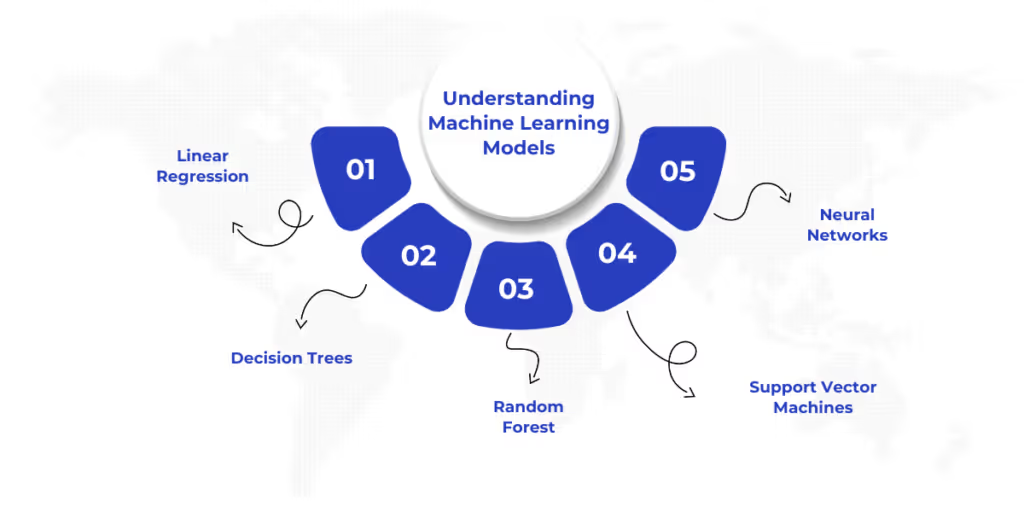


Predictive analytics, powered by machine learning, has become an essential tool for businesses looking to make data-driven decisions. According to a 2023 report by Market.us, the global predictive analytics market was valued at $11.5 billion in 2023 and is projected to reach $61.9 billion in 2032, reflecting a significant increase in adoption across various industries. At its core, predictive analytics uses statistical algorithms and machine learning models to analyze current and historical data, predicting future trends and behaviors.
Machine learning algorithms play a significant role in boosting the accuracy of predictive models. Unlike traditional statistical methods, machine learning models can improve over time by learning from new data. One of the key strengths of machine learning is its ability to train models that adapt based on incoming data. The more data these models are exposed to, the better they become at providing accurate insights.
Having set the stage for predictive analytics and machine learning, let’s now dive into the different machine learning models and their functions.

Machine learning models are categorized based on the type of task they perform. Some are designed to make predictions about continuous outcomes, while others classify data into different categories. Understanding the different types of models is essential to choosing the right one for your needs.
Linear regression is one of the simplest and most commonly used machine learning models, particularly for predicting continuous outcomes. It is used when the goal is to predict a value based on one or more independent variables. For example, you might use linear regression to predict housing prices based on features such as location, size, and number of bedrooms. Linear regression is effective when there is a linear relationship between the independent variables and the target variable.
Decision trees are another popular machine learning model. They work by splitting the data into branches based on certain decision points, ultimately leading to a conclusion. Each branch represents a decision or a set of rules that guide the prediction process. Decision trees are easy to understand and interpret, making them useful for decision-making processes in various industries, from finance to healthcare.
Random forests are an ensemble learning method, meaning they combine multiple decision trees to improve the model's performance. By averaging the predictions from multiple trees, random forests reduce the risk of overfitting, which is when a model becomes too complex and performs poorly on new data. Random forests are particularly effective when dealing with large datasets and provide more reliable predictions compared to a single decision tree.
Support Vector Machines (SVMs) are used for data classification tasks. They work by finding the hyperplane that best separates data points into different categories. SVMs are effective in high-dimensional spaces and are often used in applications like image recognition, text classification, and bioinformatics. SVMs are known for their ability to handle complex and non-linear data, making them suitable for a wide range of applications.
Neural networks, inspired by the human brain, are a powerful machine learning model used for both classification and regression tasks. They consist of layers of interconnected nodes, where each node processes information and passes it to the next layer. Neural networks are particularly effective for tasks involving complex data patterns, such as speech recognition, natural language processing, and image classification.
Now that we’ve covered the various types of machine learning models, let’s discuss some important guidelines for selecting the right model for your specific use case.
Choosing the right machine learning model for predictive analysis depends on the nature of your data and the problem you're trying to solve. Below are some key guidelines to help you make the right choice.
If you need to classify data into categories, classification models are the way to go. These models are used in tasks like spam detection, where emails are categorized as either spam or not spam, or sentiment analysis, where customer reviews are classified as positive, negative, or neutral. Popular classification models include decision trees, random forests, and support vector machines.
For predicting continuous values, regression models are the best choice. These models are used in scenarios like predicting prices, such as real estate or stock market prices. Linear regression is often used for simpler tasks, while more complex models like neural networks can be used when dealing with non-linear relationships.
Clustering models are unsupervised learning models used to group similar data points together. These models are often used for customer segmentation, where customers are grouped based on their behaviors or preferences. Clustering can also be used in other fields, such as fraud detection, where transactions are grouped to identify potential anomalies.
Having understood the different machine learning models and how to select the right one, let’s explore how predictive modeling algorithms function.
Predictive modeling algorithms are based on mathematical and statistical techniques that allow them to make predictions. These algorithms process data, identify patterns, and use those patterns to predict future outcomes.
Predictive modeling relies on various mathematical and statistical techniques to make predictions. Linear regression, for example, uses statistical methods to find relationships between variables, while more complex models like neural networks rely on advanced mathematical functions to identify patterns in large datasets. The use of these techniques helps businesses make accurate predictions about future events based on historical data.
Let’s now look at the advantages of using machine learning in predictive analytics.
Machine learning brings several advantages to predictive analytics, making it a powerful tool for businesses.
Machine learning models tend to be more accurate than traditional models because they learn from data and improve over time. Unlike traditional methods, which rely on static rules and assumptions, machine learning models adapt based on the data they process. This means that machine learning models are better at capturing complex patterns and making more accurate predictions.
One of the major benefits of using machine learning in predictive analytics is automation. Once the model is trained, it can make predictions automatically without human intervention. This not only saves time but also ensures that predictions are made quickly and consistently, allowing businesses to respond faster to changes in the market or their operations.
Machine learning models are highly scalable, meaning they can handle large volumes of data with ease. This is particularly important as businesses continue to collect and store massive amounts of data. Machine learning algorithms can process and analyze this data in real time, making it possible to scale operations and handle big data more effectively.
By providing accurate and timely predictions, machine learning helps businesses make better decisions. With the insights provided by predictive models, companies can optimize their strategies, improve efficiency, and reduce risks. This leads to more informed decisions, better resource allocation, and improved overall business performance.
Machine learning models can handle various types of data, including structured, unstructured, and semi-structured data. They are highly flexible and adaptable to different business needs. Whether you’re working with text, images, sensor data, or transaction logs, machine learning models can be trained to process and make predictions based on any type of data.
Now, let’s look at how predictive analytics is being applied in various industries.
Predictive analytics powered by machine learning is being applied in a wide range of industries, providing businesses with valuable insights that drive growth and efficiency.
In the retail sector, machine learning is used to personalize shopping experiences and detect fraud. Predictive models analyze customer behavior to recommend products, optimize inventory, and reduce stockouts. Machine learning is also used for fraud detection, where algorithms analyze transactions in real time to identify potential fraudulent activity.
In financial services, predictive analytics helps assess risks and predict market trends. Machine learning models are used to evaluate credit risk, detect fraudulent transactions, and forecast market movements. These insights help financial institutions make smarter decisions and reduce their exposure to risk.
Machine learning is revolutionizing healthcare by improving diagnostics and predicting patient outcomes. Predictive models can analyze medical records and patient data to identify early warning signs of diseases, predict treatment responses, and optimize healthcare delivery.
In manufacturing, predictive analytics is used to optimize production processes, reduce downtime, and predict equipment failures. By analyzing sensor data from machines, predictive models can forecast when equipment will need maintenance, helping businesses save time and money on repairs.
Finally, let’s discuss how to create a supporting environment for machine learning.
A strong foundation is necessary for machine learning to deliver accurate predictions. High-quality data, robust infrastructure, and effective data governance are essential for success.
The quality of the data used in machine learning models directly impacts the accuracy of the predictions. Businesses must invest in data collection and cleaning processes to ensure that the data is accurate and reliable. Additionally, a robust infrastructure is necessary to support the large-scale processing of data required by machine learning algorithms.
You must establish a data governance program to maintain the integrity of your data and ensure compliance. This program should include policies for data management, privacy, and security, ensuring that the data used in predictive models is both accurate and protected.
Choosing the right data integration tools is a crucial step toward unlocking the full potential of your business data. By evaluating the tools that best align with your organization’s needs and implementing effective integration techniques, you can ensure seamless data flow and optimize your operations.
WaferWire is here to assist you in selecting and implementing the right data integration solutions to help your business make the most of its data. Contact us to explore how we can help you implement machine learning models, enhance your predictive analytics, and drive smarter business decisions.

